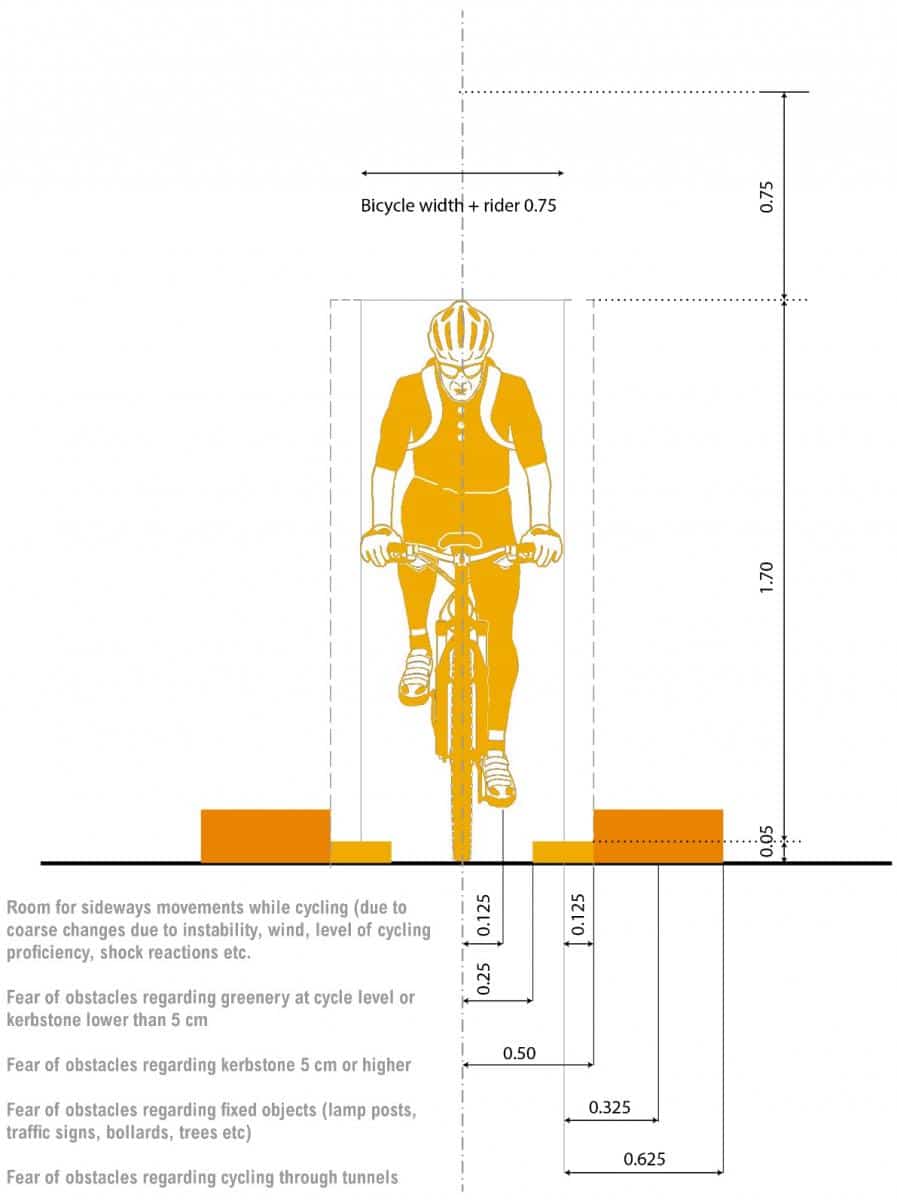Lesson
Part of: Design Principles of Cycling [Draft Version]
Space Needed for Cycling
BOOKMARK
Urban planners and designers must be aware of the space needed for a cyclist to pedal and understand the bicycle as a means of transportation. It is strongly recommended that designers cycle to be fully familiar with the cycling environment and user needs.
The average width of a cyclist is 1 meter. However, it is important that all infrastructure designed for cyclists allows 10 cm of wiggle room on each side.
The purpose of cycle lanes is to allocate and establish space for cyclists in order to:

